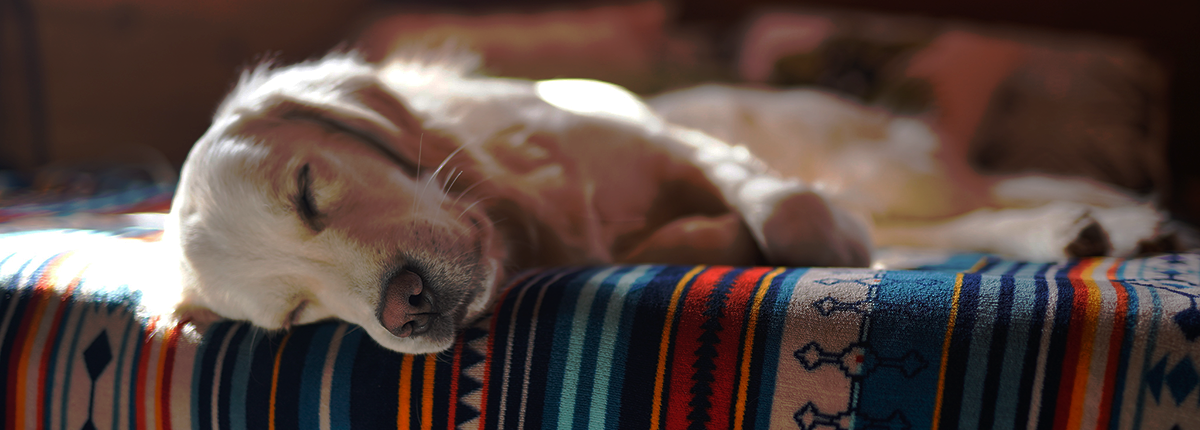
The story behind the discovery of the anti-cancer effects of the herbal extract artemisinin is fascinating. The history of artemisinin began hundreds of years ago during the Han Dynasty in China (200 BC-200 AD). In the tomb of a nobleman of the Han dynasty archeologists found a silk scroll labeled: “Medical Treatments for 52 Diseases” (this is translated from the Chinese into English). This scroll contained 283 medical treatments, including herbal remedies. This scroll is considered to be the oldest existing text on Chinese medicine. There was one particular recipe on this scroll. It described using the leaves and the stems from the artemisia annua plant, soaking them in water and taking that as a tea to treat malaria.
In 2015, a Chinese researcher, Tu youyou, won the Noble Prize for medicine for her work researching the use of artemisinin for malaria. Artemisinin’s activity is due to its unique molecular structure which contains a special type of chemical bond, called the “endoperoxide bridge”. This molecular bond interacts with iron stored in the malarial parasite, and oxidizes the iron (rusts it), which releases toxic free radicals that destroy the parasite.
Malaria Treatment Works for Cancer
In 1994 a researcher at the University of Washington, Henry Lai PhD, learned about the use of artemisinin for malaria, and the theory behind its mechanism of action, and immediately considered the possibility that the endoperoxide bridge in artemisinin that so effectively kills the malarial parasite, might also kill cancer cells which are known to have a large amount of iron on their cell membrane.
Dr. Lai did some in “vitro studies” which are studies performed in a test tube or petri dish on a laboratory bench. “In vitro” means: “In glass.” He put breast cancer cells, which are known to have very high amounts of iron on their cell membranes, and mixed an iron compound in with the tissue cultured cells. This iron would then bind to the receptors that are on the outer cell membrane of the breast cancer cell. When he added some artemisinin to this mixture, Lai found a 98% decrease in the number of cancer cells! This proved Dr. Lai’s concept that artemisinin could be used effectively for killing cancer cells.
When artemisinin has been given to humans or animals with cancers, its been observed that in a number cases their tumors would shrink. Some cases went into remission. However, some cases didn’t show any effect at all!
Artemisinin Absorption
Artemisinin is poorly absorbed from the intestinal tract, and its activity can be affected by high doses of antioxidants, especially vitamin E, or from a diet with a lot of iron in it. The dietary iron can bind with the artemisinin molecule in the digestive tract, thus inactivating it. It’s been found that you have to give artemisinin in certain ways to improve its absorption.
Because artemisinin is not very absorbable when taken orally, it needs to be dosed fairly high to get higher blood levels. Holley Pharmaceuticals, one of the original manufacturers of artemisinin, recommends giving butyric acid along with the artemisinin to enhance its absorption.
According to studies, the use of the butyric acid will increase the absorption of the artemisinin by 500 – 1000%! I’ve spoken with veterinarians and people who have used artemisinin, and many don’t feel the butyric acid gave any kind of advantage to the action of the artemisinin. However, Butyrex(TM) (calcium magnesium butyric acid) is inexpensive and safe, and widely available in health food stores and the internet. Its recommended that you give 50 mg/kg (~25 mg/pound) once daily on an empty stomach, at the same time you are giving the artemisinin, away from meals.
Administering the artemisinin with some fatty material like butter or fish oil will aid in absorption. Another strategy to improve absorption is to give 250-500 mg of vitamin C with meals, because it increases iron absorption from the meal in the stomach. This increases the sensitivity of cancer cells to the destructive effects of the artemisinin.
Cancers Found to be Susceptible to Artemisinin
Artemisinin has been found to work better with more rapidly-growing tumors. Rapidly dividing tumors use a lot of iron for their cellular division, which makes them susceptible to the cytotoxic effects of the artemisinin on the cancer cells. Studies have found that artemisinin has potency for these following types of cancer:
Breast cancer
Colon cancer
Human leukemia
Canine osteosarcoma
Prostate cancer
Pancreatic cancer
Glioblastoma
Human lymphoma
Melanoma
Ovarian cancer
Renal carcinoma
Neuroblastoma
Small-cell lung carcinoma
Types of Derivatives of Artemisinin
Artesunate is available as an injectable, water-soluble form of the artemisinin. Commonly its supplied in 60 mg ampules from a pharmacy in Hong Kong. The dosage of artesunate is 60 mg once daily. Artemether is a semi-synthetic fat-soluble form of artemisinin that has the longest life in the bloodstream, keeping levels higher longer, but with greater risk of neurologic side-effects at higher dosages. The recommended dose for the artemether is 1-2 mg/kg/day, although some veterinarians are recommending twice that dosage. Artemether readily crosses the blood-brain barrier, and thus, has potential to cause neurologic side effects at much higher dosages than the 5 mg/kg/day which would be its upper end safe dose. If you are using a product that contains artemether combined in the same capsule you need to dose that product based on the artemether dosage.
Various Protocols for Artemisinin
There are several protocols for dosing derivatives of the artemisia annua plant. Some protocols use the artemether derivative which is water soluble and give it once a day, and the artemisinin once daily. Other protocols use a higher dosage of the artemisinin and give it daily on an empty stomach with a non-iron fatty material such as cream cheese, or fish oil, which can help with absorption. The dosage of artemisinin is fairly high, reported to be 5-8 mg/kg daily. This comes out to 6.6-11 mg/pound. For instance a dog weighing 100 pounds would take about 300 mg twice daily of artemisinin. Other protocols use the injectable form called artesunate in order to by-pass poor oral absorption of the artemisinin molecule.
Marcia Greer, my co-blogger on this site, a pet hospice nurse, and greyhound rescuer uses artemisinin and gives it for a week on and then a week off. Remember, its important to not give artemisinin with food containing a lot of iron, like raw red meat, because the artemisinin will also bind to the dietary iron and be inactivated. Its suggested instead, to give it with a small amount of a dairy product, since those contain no iron.
Dr. Rob Pollard, a veterinarian and colleague of mine in northern California, likes to use it at that higher dose (11 mg/pound approximately) twice daily for a week, then he suggests stopping it for a week, all the while taking an iron supplement the week you aren’t giving the artemisinin to your pet. He suggests using the iron supplement called ferrous sub-sulfate, and that you give 325 mgs once daily for that week off the artemisinin. Pollard says that this will load the cancer cells up with iron which they need for multiplying themselves, and then causes them to be targeted by the artemisinin molecule that attaches to the cancer and causes oxidation or rust of the iron which then causes the cancer cell to die.
It is recommended that not only should the artemisinin be given 3 hours away from food that contains a lot of iron, such as red raw meat, it also should be given away from antioxidants, as they can help to defeat the oxidative activity of the artemisinin molecule. If your pet is receiving radiation therapy, then it is recommended to wait at least 2 weeks if not longer before using the artemisinin. This is because radiation therapy increases normal cells’ sensitivity to the destructive effects of artemisinin because the radiation increases the iron receptors on normal cells.
Artemisinin was tested with 22 chemotherapy agents and was found to enhance their effectiveness, although it won’t have an effect on chemotherapy side-effects, unfortunately. Its recommended if you are going to do this, to wait several hours until after the chemotherapy has finished to administer the artemisinin.
In general, if the artemisinin will work in slowing down or stopping the growth of the tumor, it will happen in the first month of administration. I recommend going ahead and trying the artemisinin for at least a month at 8 mg/kg twice daily to see if, in fact, your pet’s tumor is responsive to it. If it does respond, then its worthwhile continuing with your administration of the artemisinin to your pet for another 3 months, and then taking a break for a month before starting back up again.
Here is a dosing chart to simplify things for you:
- <40 # 100 mg BID
- 40-80 # 200 mg BID
- >80 # 300 mg BID
To summarize:
Artemisinin has shown potential as an anti-cancer herb that selectively kills cancer cells and doesn’t affect healthy cells.
The use of strategies to improve its absorption and potency through the use of diet and supplements like Butyrex and Vitamin C, and caution when using it concurrent with radiation therapy or high doses of antioxidants make using it not as easy as we would like, but if your pet has cancer, and is not doing well with other approaches, the use of artemisinin just may help. It is a non-toxic selective plant derivative that only affects cancer cells when used appropriately.
Robert J. Silver DVM, MS, CVA
Boulder, CO
December, 2015





Dear Dr. Rob,
My 13 years old cat Shadow was diagnosis with large cell lymphoma in his intestine on March 7, 2017. I purchased a bottle of Artemisinin 50mg capsules (Artemin50)and Butyrex from Holley Pharmaceutical. Shadow did not have chemotherapy treatment, but currently my vet put him on Prednisolene Injection every two weeks and B12 every week. Should I give Shadow 50mg artemisinin twice daily for 7 days then 3 days off as I read this article from Dr. Lai? Butyrex did not have any recommendation dosage printed on the bottle. How much should I give it to him? Do I give Artemisinin and Butyrex together? Do I continue administer his Prednisolene and B12 injection while taking Artemisinin and Butyrex? I find out “Artemether” and “Artesunate” will make Artemisinin much more effective when administering together. What’s the safest dosage for Shadow? He loss weight, appetite and only eats very small meals these days. I believes he weight about 8 lbs as of today 3/16/2017. Thank you very nuch and looking forward hearing from you soon.
Best Regards,
Lilly Chiang
Lilly, I think that trying the dosage that Dr. Lai recommended is a good idea. you need to give it when your kitty is not getting a meaty meal, as that has iron in it.
Unfortunately for cats, the Butyrex is too large of a tablet for them, you would need to see what weight they recommend the butyrex for in dogs, and then give a proportionately low amount for your cat’s weight. There are some people who dispute the value of the butyrex. On the three days that you aren’t giving your cat the artemisinin, you should feed a high meat diet so he can iron-load. which can increase the potency of the artemisinin. It si true that the other forms of the artemisinin are more soluble, but there may be toxicity problems with the artemether. I would stick with the artemisinin. Have you tried medical mushrooms for this? Also, the prednisolone can be given with another chemo agent called chlorambucil, and that might work better than just the prednisolone.
Dear Dr. Rob,
I was overjoyed when I saw your response today. Thank you so much for taking your valuable time and answer all my questions. Yes, my Holistic vet Dr. Gray prescribed Shadow some Maitake Mushroom Extract on his first office visit along with an acuputure treaments. I am terrified administer any new herbal drugs or meds to him as they can caused him to vomit uncontrollably or sometimes diarrhea. Thank you again for your great support.
Best Regards,
Lilly
Hello Dr. Rob,
I have left a post about our toy poodle, Daisy, and would also like to also update the comment with the note that the conversion factor from kg to pounds on your website is incorrect in some parts of the article. In the paragragh about “Various Protocols for Artemisinin”:
“The dosage of artemisinin is fairly high, reported to be 5-8 mg/kg daily. This comes out to 6.6-11 mg/pound. For instance a dog weighing 100 pounds would take about 300 mg twice daily of artemisinin.”
The calculation from 5-8 mg/kg daily is (5-8 mg/kg)*(1 kg/ 2.2 pounds) = 2.3-3.6 mg/pound, which is about 3 times less than the 6.6-11 mg/pound in your article.
For a dog weighing 100 pounds, then (100 pounds)*(3.6 mg/pound) = 360 mg, or about 180 mg twice a day.
Thank you,
John
John
Thank you for correcting my math. The reality is that the dosage for artemisinin has not been determined in a scientific way. The dosages reported are anecdotal, and depending upon who you read or talk to, it might vary substantially. I posted what I have found to be useful for my patients, and have blended that with information from veterinarians whose work with cancer I respect. I have seen some doses that are fairly low. The therapeutic dose for the patients who have responded has been fairly high, which is reflected by dosage rage of 5-11 mg/kg. If the cancer does respond to the artemisinin, and you use a large dose to begin with, you run the risk of creating toxicity from the breakdown of the dead and dying cancer cells. Thus, I prefer to start with a lower dose, and scale it up after the first week of administration if no adverse side effects were observed.
Dr. Silver
Hello Dr. Rob, I have a 14 year-old cat that has been diagnosed with lymphoma. It has a tumor located in the colon and she cannot defecate on her own. The oncologist recommends chemotherapy and I believe I will start it so the tumor doesn’t expand. I have ordered Artemisinin as a complementary therapy and have also seen some wonderful reviews to the product: Only Natural Pet B.S.S.T. Herbal Formula, that it does very well with cancer patients. Would you recommend this product being used along with the chemotherapy? And do you know if it would interfere with Artemisinin? Can I do all three of them – chemotherapy, Artemisinin and your B.S.S.T formula?
And one more question: would you recommend the following herbs: Xiao Chai Hu Tang powder or Bu Zhong Yi Qi Tang?
I am from Romania and there is no such thing as holistic vets around so I am wondering if you could help me with a piece of advice, since I am only browsing the Internet to help my cat fight the cancer…
Thank you very much,
Cristina
Christina you live in a very beautiful country. I had the pleasure to visit there several years ago.
Artemisinin can be used with chemotherapy, although I usually recommend holding off on the supplement during chemotherapy to be sure there is no interference we don’t know about. You can resume the supplement the next week. The BSST is this company’s copy of a classic formula, Essiac that has had some good benefits to cancer patients. The only thing I’m not sure of is if the herbs in the Essiac formula contain iron, they may stop the artemisinin from working. We recommend a week on the artemisinin and a week off. During the week off we give an iron supplement to load up the cancer cells with iron so the artemisinin can target them and kill them. Look up the herbs in the formula and see if they have iron in them, if so, then only use the formula on the off week when you are loading your cat up with the ferrous sulfate. Dogs take a 325 mg capsule once daily, a Cat would only take a small amount, maybe 50 – 100 mg/day.
Of those two Chinese herbal formulas you are asking about, I would choose the Xiao Chai Hu Tang, which is better for the liver, as compared to the Bu Zhong which is better for the spleen. Lymphoma is a very difficult disease to treat, so if you can use prednisone and or leukeran to help reduce the size of the tumor so she can defecate normally, I would recommend that for her comfort and quality of life.
Dr. Silver